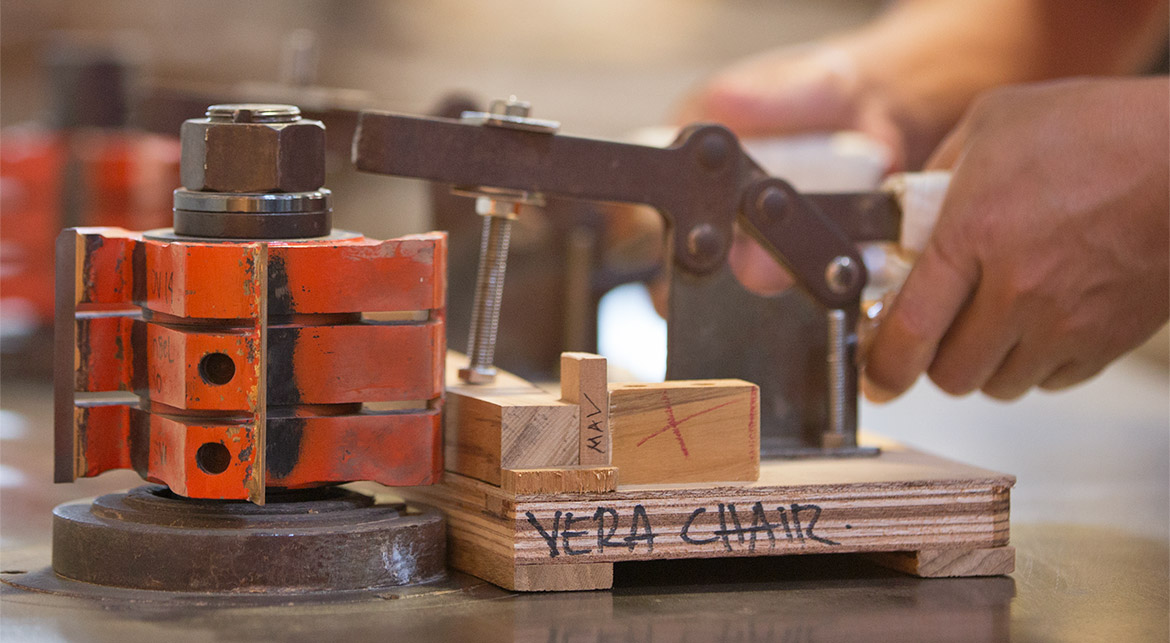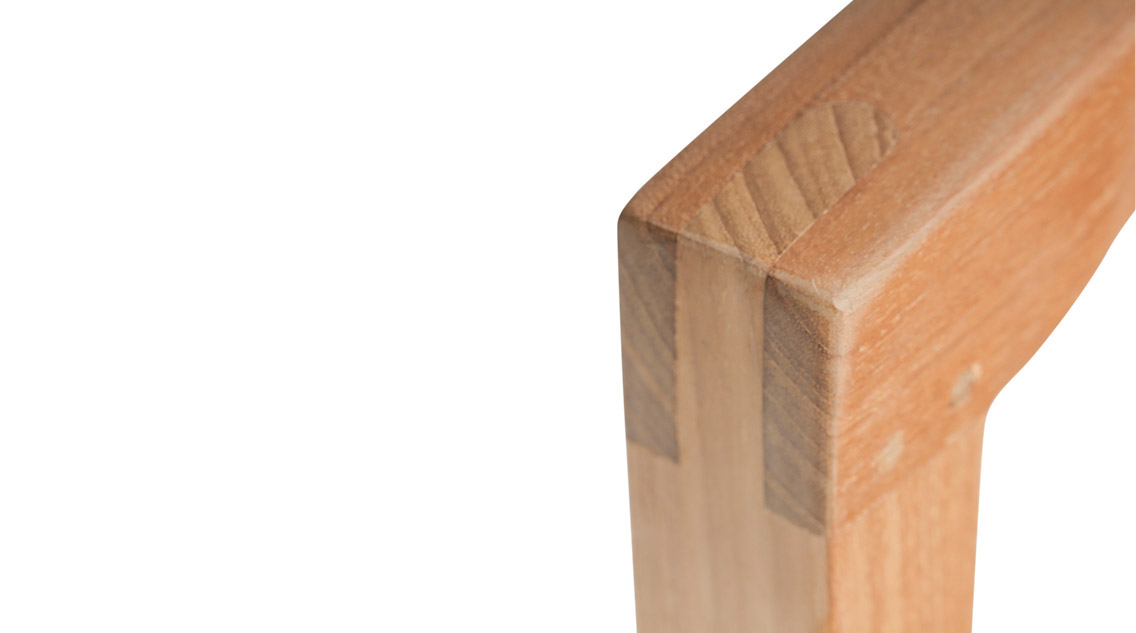PRECISION JOINERY
MEANS NO GLUE LINE
In woodworking terms, machine-made refers to the precision joinery made using modern machinery. These are industrial grade machines as opposed to simple machines used in the handmade industry.
These machines make precision cuts and fits allowing little or no tolerance for a glue line and as a result, the structural integrity of the furniture is not compromised. This is especially useful for outdoor furniture as timber moves more when exposed to the elements.


•
Handmade or semi-machine-made furniture on the other hand, is made using simple machinery and does not create precision fit furniture which leaves visible glue lines and imperfections. It is also often the case that components are not precisely perpendicular, resulting in extension or folding mechanisms not functioning as smoothly as those made using modern machines.


HAND ASSEMBLY
The assembling process is done manually by hand, while the fine sanding is done firstly by machine then finally by hand. This ensures that the surface is completely flat and smooth, which is evident in Wintons Teak products.
Machine-made joinery, assembled by hand.


•
MITRED JOINT
A mitred joint is created through beveling two pieces of wood, creating a 45-degree angle which when joined, creates a perpendicular joint. To strengthen the joint, a spline/biscuit is inserted into the thickness of the wood. Precise machining is critical to creating a tight and strong joint as any discrepancies in the angle of the joint will cause a gap and a non-perpendicular corner.
•
BOX JOINT
A box joint is created by overlapping a series of three timber pieces made at the end grain. Dowels are drawn through the side of the joint to add stability. A box joint is ideally used to strengthen load-bearing structures, where timber components are not thick enough to accommodate traditional tenon and mortise joinery.


